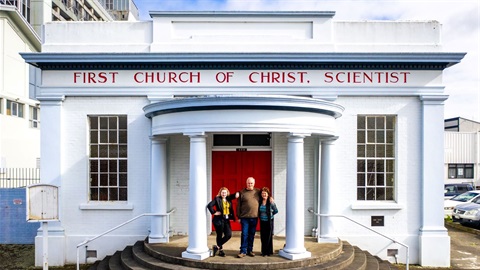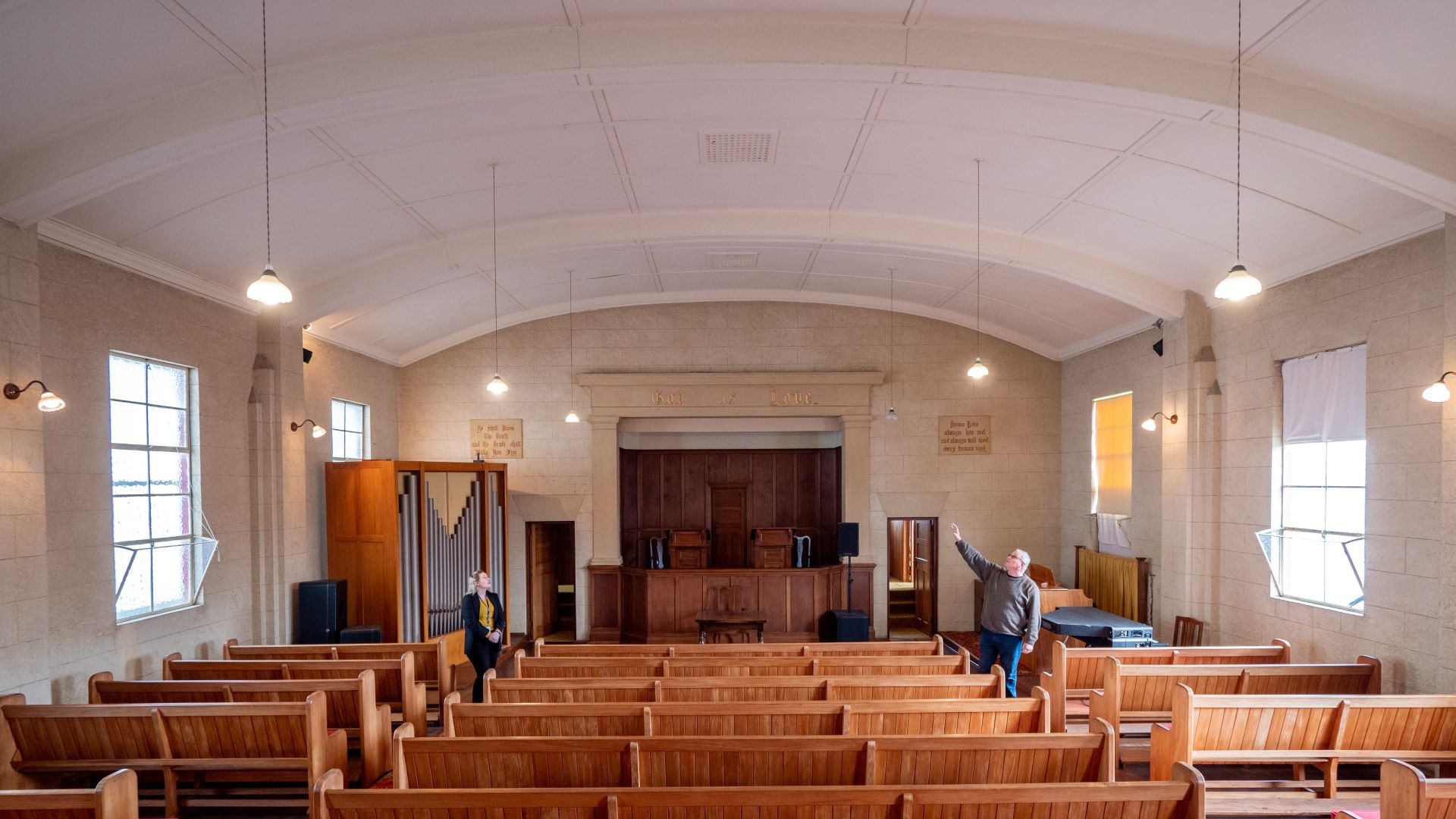Earthquake-proof for a fraction of the cost
Published on 26 January 2021

Most people would baulk at the idea of buying a heritage-listed building that needs earthquake strengthening – but not Ben Millar.
Not much more than a year ago Millar bought the First Church of Christ, Scientist building on 409 Church Street, which had an earthquake rating of 14 per cent. The interwar classical style building was designed by LG West and built in 1933 for the church. It was sold by the members because they couldn't afford the cost quoted for carrying out earthquake-strengthening structural upgrades.
Millar has so far spent $15,000 on the engineer's report and structural upgrades, which have improved the earthquake rating for his building from the initial 14 per cent, past the legal requirement of 34 per cent to 80 per cent, where it currently stands. That $15,000 has come through Palmerston North City Council's fund to assist owners of heritage buildings that need earthquake strengthening.
"What I would say to anyone who's interested in heritage buildings is to look at as many as you can," Millar says. "Do your due diligence, go to the Council, talk to the people at the Council because they've done it before and you've got to be hands-on. Find a good engineer who's into practical solutions."
It also helped that Millar comes from an engineering background, has been involved in construction before and that he bought a "standout building".
He hired engineer Kevin Burrows, from Grayson Design and Developments Ltd in Auckland, because he didn't agree with a previous engineering report. He then took on builder Zac Wright, of Wright Renovations, to do the structural upgrades.
"I literally got my hands dirty. I'm passing stuff to the builder, I'm running up and down the ladder handing him things, I buy all the supplies and I do everything to optimise his time. Same with the engineer. I made sure he had good access and I made it as easy as I could for him to engage with this building and me.
"It didn't cost me a lot of money, it just took time," Millar says.
The engineering report cost $8,500 and the structural upgrades have so far cost about $6,500. The upgrades were made to the steel trusses in the fore and aft bracing of the ceiling. "We braced up all these trusses by putting triangles in with metal bracing so we made the roof a lot more rigid. That was it," Millar says.
Council Planner Victoria Edmonds says that a lot of owners of heritage buildings that need earthquake-strengthening work think that it's going to be beyond expensive.
"What we're finding is that while it might be sometimes the case, it also depends on what road you go down. What Ben did was he worked alongside the engineer who introduced innovative ideas and he managed to get the building earthquake-proof for a fraction of what we originally thought it would have cost," Edmonds says.
In Palmerston North, there are 89 heritage-listed buildings and seven heritage objects. Of the 89 buildings, Council owns five, which all need strengthening – the City Library, Square Edge, Caccia Birch, The Regent and the old power station on Keith Street.
"The majority that require strengthening are in private ownership," Edmonds says.
"The Council fund doesn't always cover 100 per cent of the cost. We can allocate up to $60,000 for every heritage building that needs earthquake strengthening – $20K for phase one, which is usually a feasibility study, $20K for phase two, which is usually drawings, and $20K for phase three, which is the works.
"In Ben's case, we could cover the entirety of the cost because it fell well within what we allocate for a heritage building."
Millar says the whole process was very rewarding for him.
It was a big engagement with the Council. They assisted me through other processes – I've got a building consent to modify the building out the back. My hand was held through all that. It wasn't onerous. The Council bent over backwards to help me. - Ben Millar
